Pegmatite is an exceptionally coarse-grained plutonic igneous rock. Most pegmatites have a mineralogical composition of granite but composition has no defining importance here. Pegmatites may have any imaginative magmatic composition and they are actually known to contain a large number of unusual minerals.
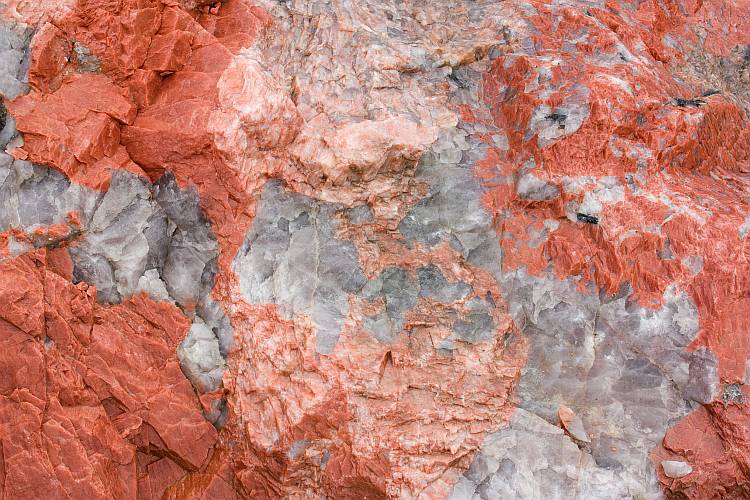
Pegmatite is a very coarse-grained igneous rock. Simple pegmatites are composed of large crystals of ordinary minerals. Here is a sample of alkali feldspar granite pegmatite from Northern Norway which is composed of alkali feldspar (pink), quartz (gray) and biotite (black). Width of view 50 cm.
The main constituents of pegmatites are usually at least several centimeters in diameter or more. The average grain size for all occurrences is approximately 10 cm. Pegmatites may contain huge crystals of mica, beryl, tourmaline, etc. which may be several meters across. Largest spodumene crystal found was 15 meters long1. Pegmatites have an extreme variation in grain-size. Largest magmatic crystals found so far are many meters in length. Most pegmatites have a fairly simple composition: K-feldspar (either orthoclase or microcline) + quartz + some other minerals. Complex pegmatites commonly contain tourmaline, lepidolite, topaz, cassiterite, fluorite, beryl, etc. Pegmatites are not rare rocks, but their overall volume is small. They form small marginal parts of large magma intrusions known as batholiths. They form as a late-stage magmatic fluid starts to crystallize. This fluid is rich in water, other volatiles, and chemical elements incompatible in main magmatic minerals.
This is the reason why pegmatites are so coarse-grained and why they contain so much unusual minerals. They are coarse-grained because of high volatile content which makes the magma less viscous and therefore enhances mineral growth (chemical elements are free to move to look for and join a suitable and already existing crystal). Unusual minerals form because the fluid is enriched in exotic chemical elements like lithium, boron, beryllium, rare earth elements, etc. These elements are forced to form their own mineral phases because they are rejected by major rock-forming minerals like quartz, feldspar, and others.
This wealth of minerals makes pegmatites often valuable as a mineral resource. Pegmatites may be mined because of their high content of feldspars, clay (if weathered), mica, or many metal-bearing minerals. Pegmatite is also a source of gems like beryl, tourmaline, zircon, etc.
Most pegmatites are granites with or without exotic minerals, but mafic pegmatites (gabbro, diorite) are known as well. Silica undersaturated (without quartz) magmatic rocks may be also pegmatitic.
The term “pegmatite” was first used by a French mineralogist René Haüy, but he used this term as a synonym of graphic granite. Contemporary meaning was given to the rock type in 1845 by an Austrian mineralogist Wilhelm Heidinger. It may be somewhat surprising, but to this day sometimes geologists confuse these terms. In fact, it is quite easy to be confused because graphic granite, or more precisely, K-feldspar with cuneiform intergrowths of quartz, are common in pegmatitic rocks.
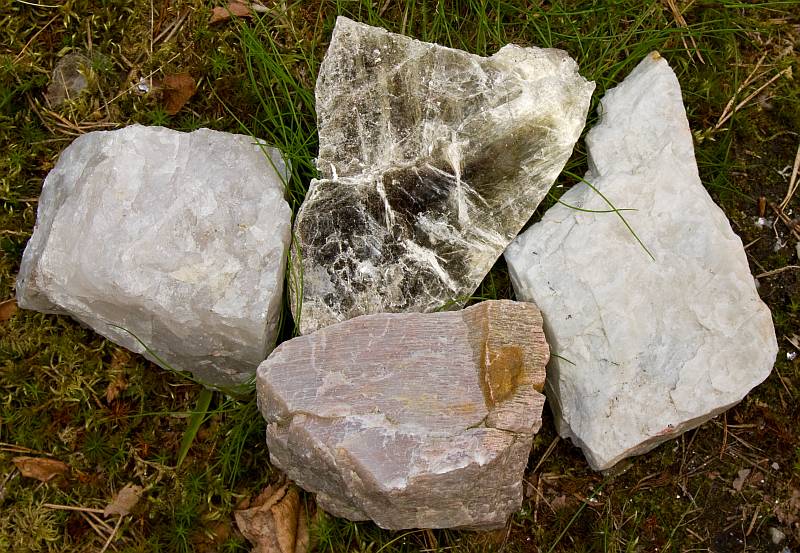
Common minerals in a granitic pegmatite: quartz (left), muscovite (up), plagioclase with oligoclase composition (right), and microcline. These crystals (each one about 10 cm across) come from a pegmatitic rock. Evje, Norway.
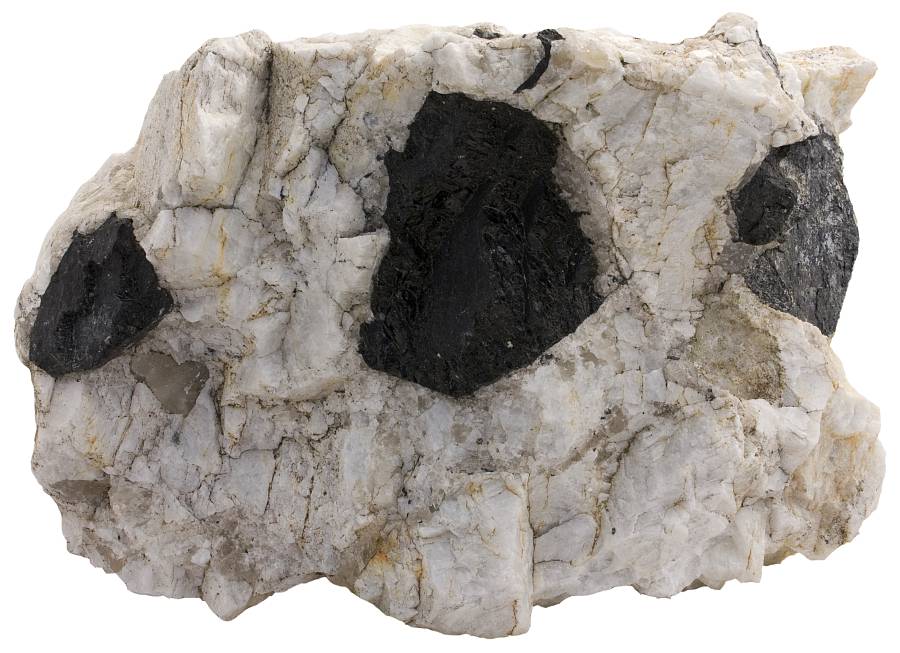
Tourmaline pegmatite. Tourmaline is black, white is plagioclase, gray is quartz. Haapaluoma, Finland. Width of sample 15 cm.
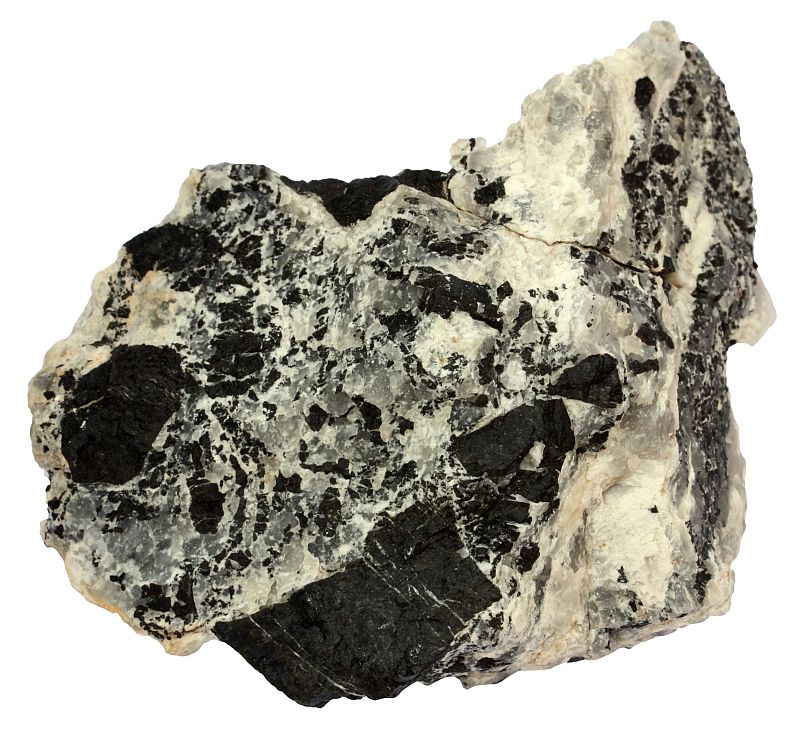
Pegmatite with tourmaline, feldspar, and quartz. The width of the sample from Catalonia is 7 cm.
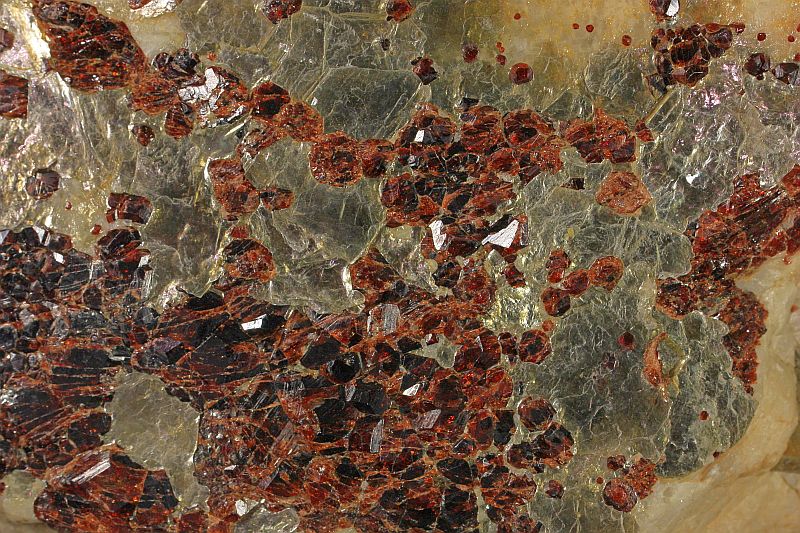
Spessartine (Mn-garnet), sodic plagioclase, and muscovite in pegmatite. Width of sample 10 cm.
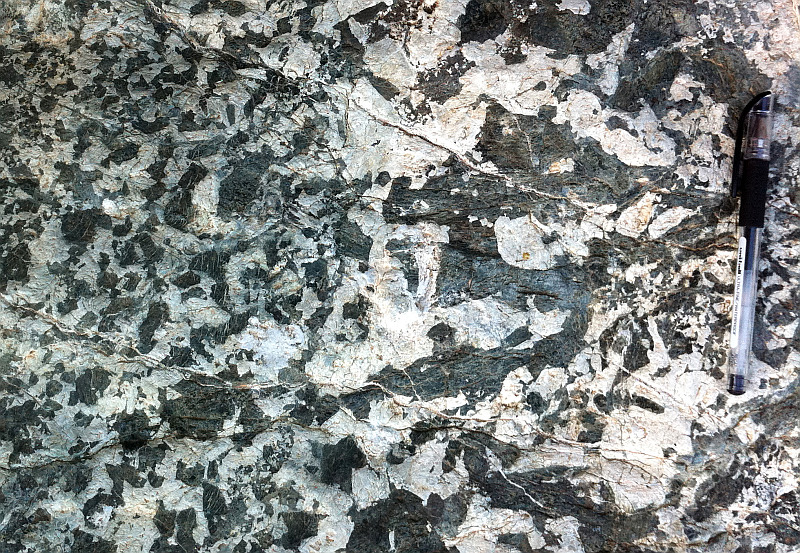
Gabbroic pegmatite from Cyprus. White is plagioclase, black is pyroxene.
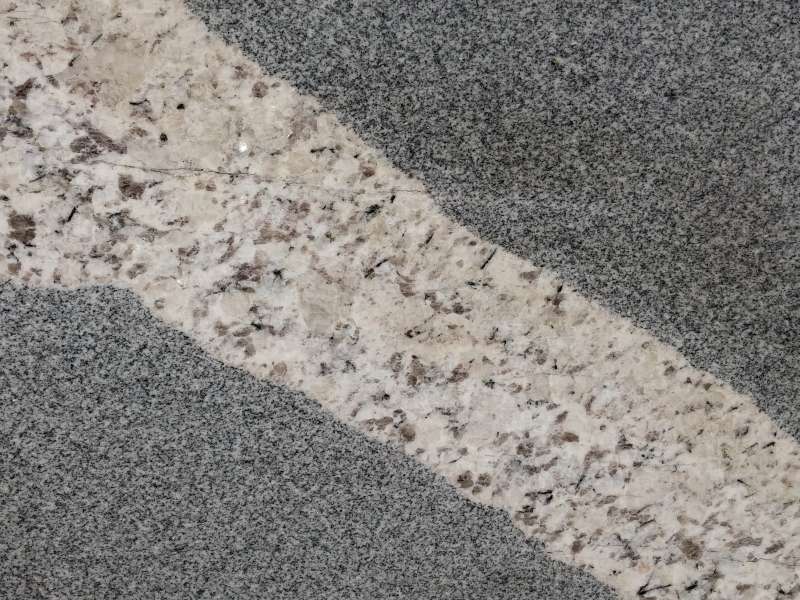
Vein of coarse-grained granite in a host rock of fine-grained granite. This decorative rock is used as a tombstone in Baton Rouge, Louisiana, USA. Width of view 25 cm.
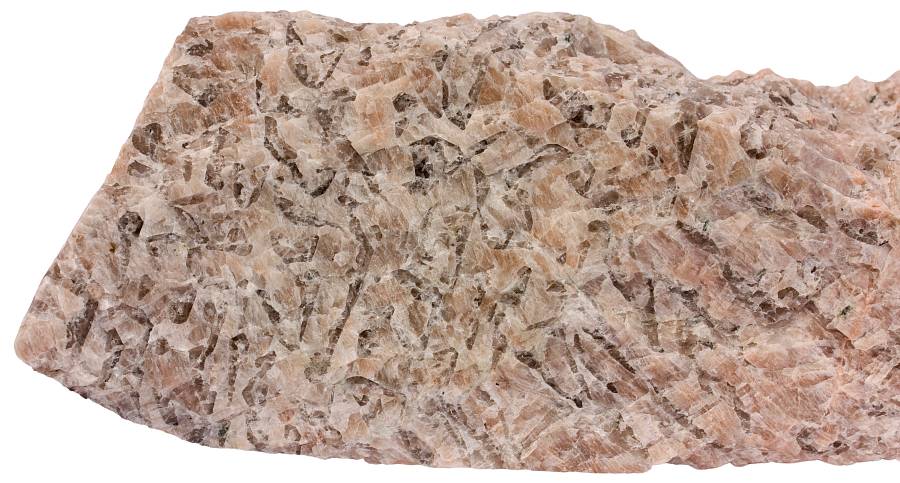
The term “pegmatite” was first used by a French mineralogist René Haüy for such rocks that we nowadays know as graphic granites. Evje, Norway. Width of sample 9 cm.
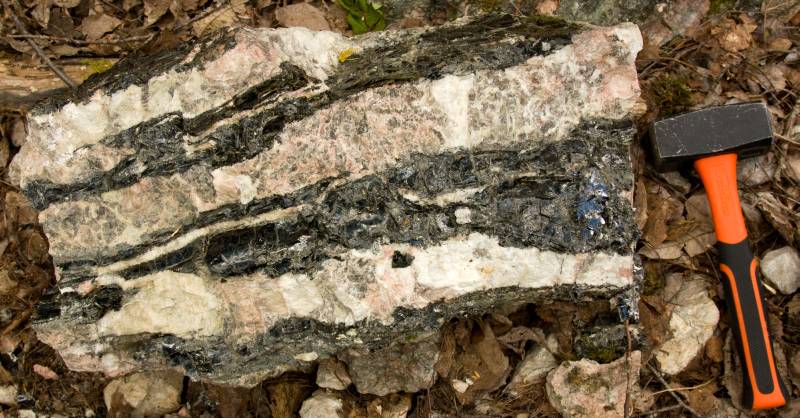
Pegmatite in which the main ingredients are biotite mica (black), microcline (pink), oligoclase (white), and quartz (gray). The rock has a monzogranitic composition. Evje, Norway.
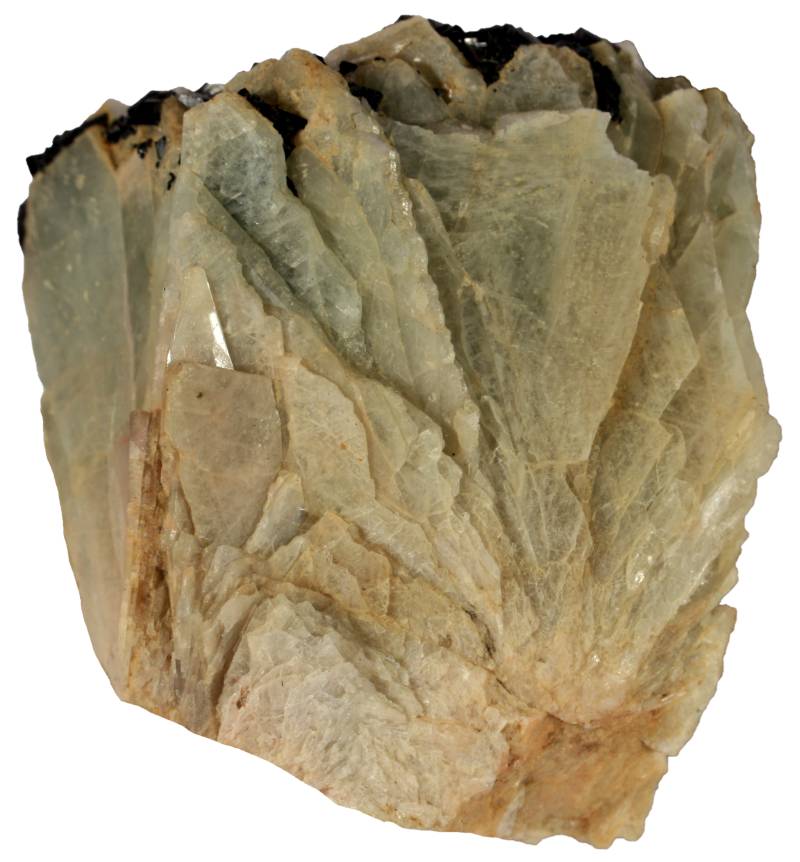
Cleavelandite is a lamellar variety of almost pure albite. It forms as a late-stage mineral in pegmatites by replacing other minerals. Width of sample from Ontario is 5 cm.
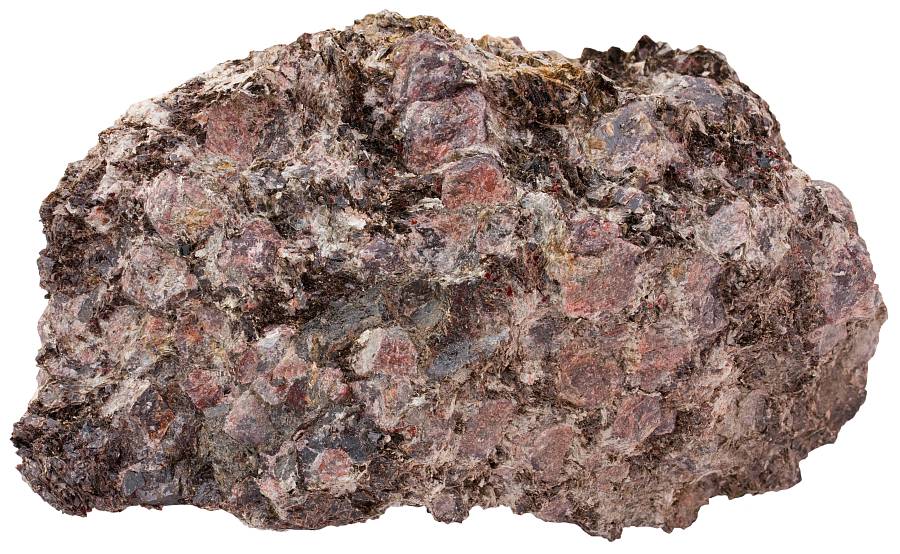
Pegmatite that contains two common minerals (biotite and garnet). But very unusual is that this is all there seems to be. No feldspars or quartz. Garnet crystals have well-developed crystal faces. Width of sample 13 cm. Senja, Norway.
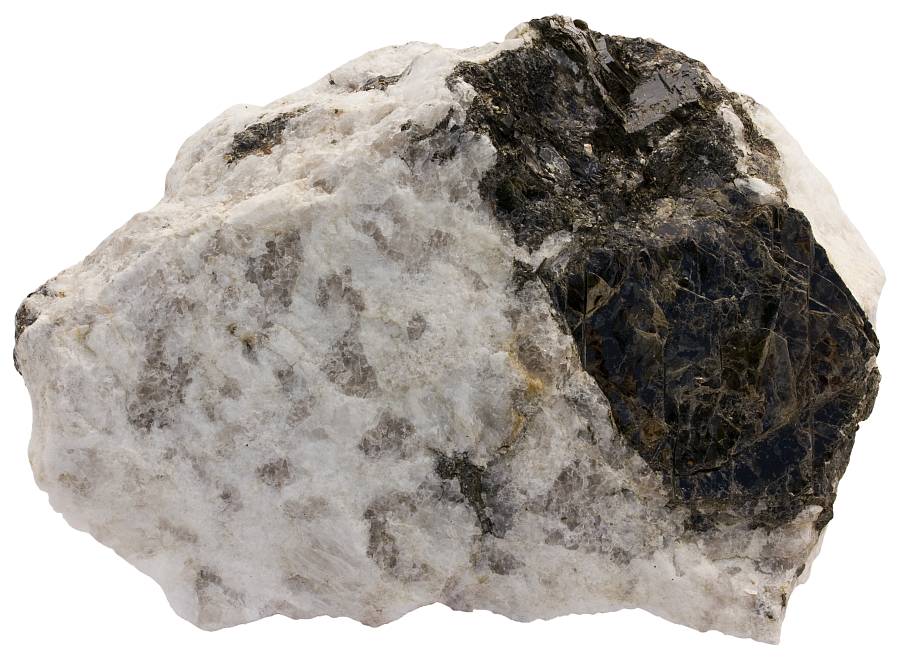
Tonalite pegmatite. Black is biotite, white is plagioclase, gray is quartz. Trælen, Senja, Norway. Width of sample 17 cm.
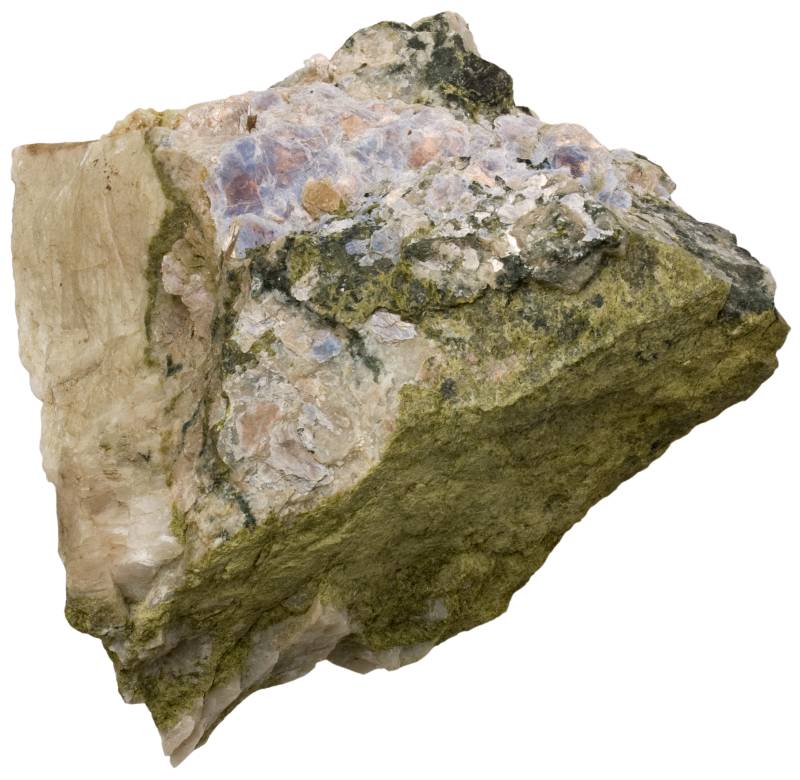
Pegmatite with plagioclase, epidote, and muscovite. Møre og Romsdal, Norway.
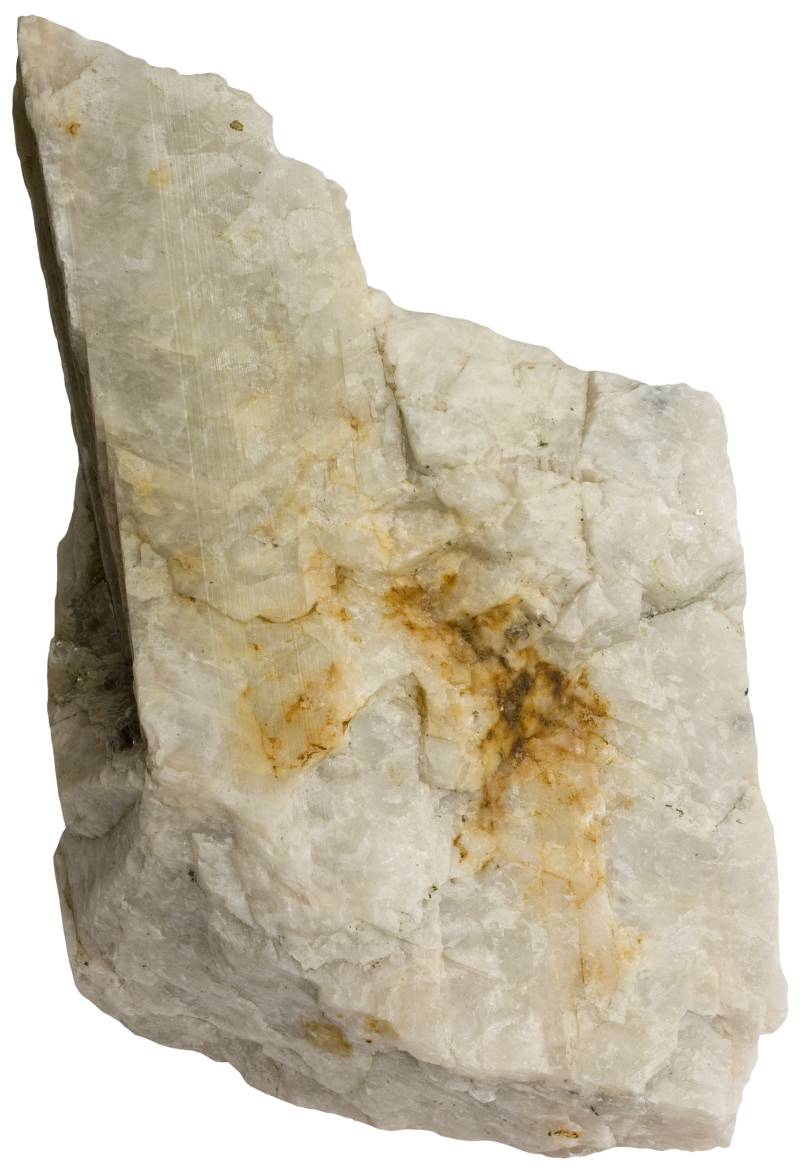
Large plagioclase crystal from a pegmatitic rock demonstrating polysynthetic twinning (parallel grooves) characteristic to plagioclase feldspars. Evje, Norway.
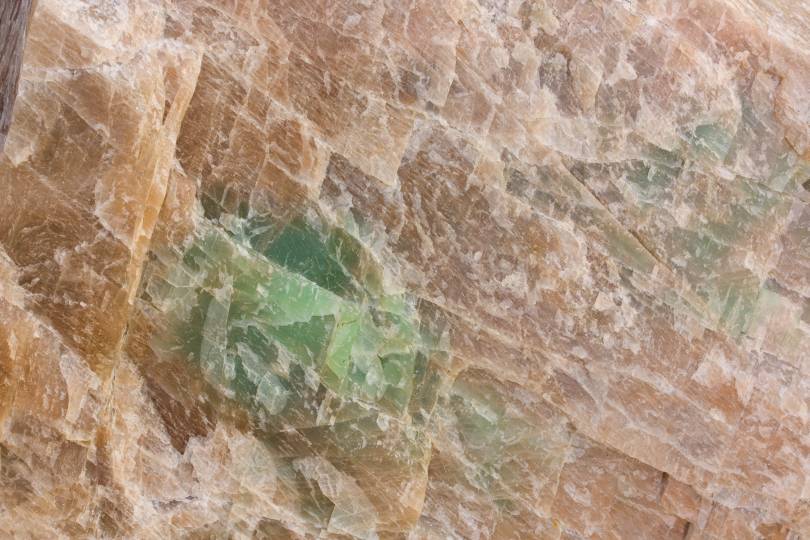
Large feldspar crystal with greenish amazonite. Aust-Agder, Norway. Width of view 13 cm.
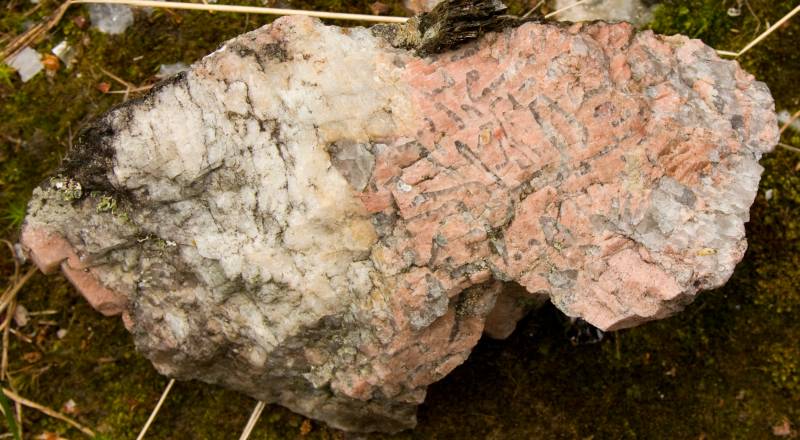
Pegmatite with graphic granite and plagioclase. Evje, Norway.
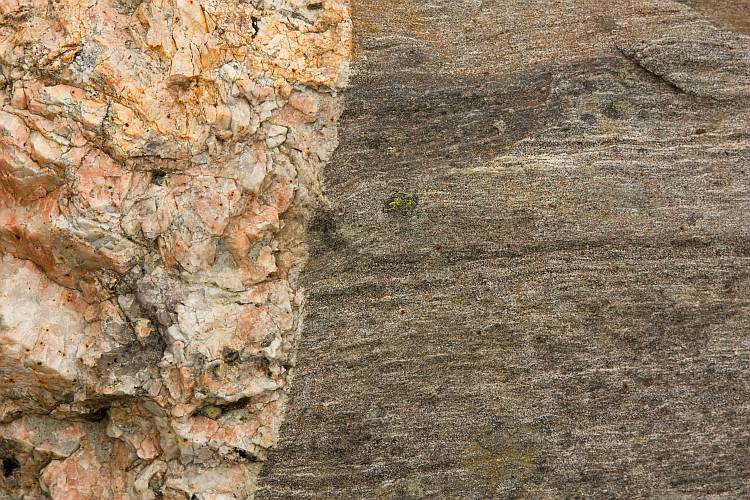
A contact between gneiss (on the right) and granitic pegmatite. Trollstigen, Norway.
References
1. Jahns, Richard H. (2007). Pegmatite. In: McGraw Hill Encyclopedia of Science & Technology, 10th Edition. McGraw-Hill. Volume 13. 124-126.
Spectacular pegmatites.